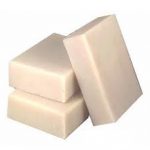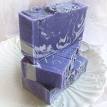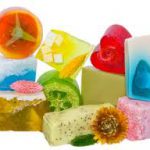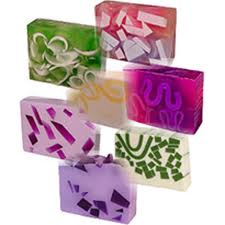Interest in soap making or making your own is becoming increasingly popular within the last few years.



Wonderful skin friendly soaps are being made and sold by soap specialists who mix vegetable oils, essential oils, herbs and/or botanicals and clays to
create these incredible moisturizing bars.
Natural Handmade soap can have so many good benefits for your skin. Some soap makers make soap bars that are meant to help specific skin conditions such as the Charcoal Bar that benefits a range of skin conditions .
When purchasing your handmade soap you want to make sure the soap maker is skilled.
There is nothing worse than buying homemade soap only to have it melt away in a bath or two, or to get a rash, or burn from uncured soap. Some things to ask or look for are:
Is the soap made the Cold or Hot processed way or is it Melt and Pour
Hot Process
Some soap makers use the hot process method because it reduces the manufacturing process from 4-6 weeks down to a few days; however, this process heats the soap at much higher temperatures, which result in a much lower concentration of beneficial ingredients like oils and glycerin. Making soap this way also requires a higher percentage of lye.
Cold Process
This is my preferred soap making method because the manufacturing is done at room temperature, thereby leaving the benefits of the vegetable oil and essential oils used in the manufacturing process. There is less lye used and the soaps are cured for 4 – 6 weeks. Longer to make but it’s worth it for a soap that smells fantastic and is beneficial to your skin.

Melt and Pour (glycerin soap)
This is popular with many people because you can just melt and pour it, add fun colors and even embed toys or other things in the soap. They are quick, easy and fun, but no safer than that store bought soap.
To make this soap a solvent must be added so the product can be remelted easily to be able to pour it into molds. Some crafters will try to fool people into believing that this is a handmade natural product that is good for their skin. It may be that they just don’t know or they just don’t care.
Some common ingredients you will find in melt and pour soaps are Propylene glycol and triethanolamine or TEA.
If you are going to buy natural handmade soap it’s important that you know what you are buying.
Ask the questions
· What process do you use to make your soap?
· What are the benefits of the oils in your soap?
What to look for – in the soap maker
· Are the products registered? With HC or your local department
· Is the soap maker a member of the NHSCG or CGSCC
· Are the products labeled – all ingredients must be on the label
What to look for – in the bar of soap you are purchasing
The soap in the picture below was bought at a Craft Fair the day before. I could literally squish it flat. This should not happen if your soap is made well and cured properly. It also seemed to separate in layers.

· Hardness – If you can press your finger into the soap and make a mark, then the soap is either not fully cured, or the oil percentages are off. If you buy soap that is too soft it will melt away quickly.
· Crumbly or chalk like texture – this is an indication that the soap maker has used too much lye. This makes the soap high in alkaline, which makes a very drying bar.
· Orange spots – if you see orange spots on the soap, it means that the soap maker has used too much oil; therefore they were unable to become soap. These spots are an indication that the bar can go rancid.
If you buy handmade soap and are not sure whether it is truly handmade or if it’s simply melt and pour. There is a simple test you can do. Put it in your microwave and it will start to turn to liquid in about 30 seconds or less if it is melt and pour. A true soap will not melt that easily.
© 2016 – 2018, Tes. All rights reserved.
Thanks for this post. My daughter has recently discovered essential oils and has fallen in love with using them every opportunity she can. I was just visiting her and we were talking about all the ways she could use them. I suggested making soaps for xmas gifts this year. I’m excited to forward your post to her. I can tell it will save her a lot of time trouble shooting possible things that can go wrong. Thanks again.
Your welcome, soap is a wonderful gift for Christmas. She can have fun with it, the scents and colors. Here are a couple links that she may want to check out.
Soap Coloring Ideas, hmmm what to color this soap with?
What to Scent Soap With – Essential Or Fragrance Oils
I love this page! Soap is one of those things that has always facinated me. And natural soap is the only way to go. If we trace the history of soap we will find that most people never used it! I will try to make some and let you know how it went. I like the idea of making it myself and not buying it.
Your right lots of people didn’t use soap. In the Roman days they actually rubbed Olive Oil on their skin and scrapped it off to clean their skin you’ll find more information at Olive Oil and Soap Making Also if you want to check out a couple other pages, you can get more information on soap making
Soap Making Books and DVD’s
How to Make Soap at Home -Step by Step instructions with pictures